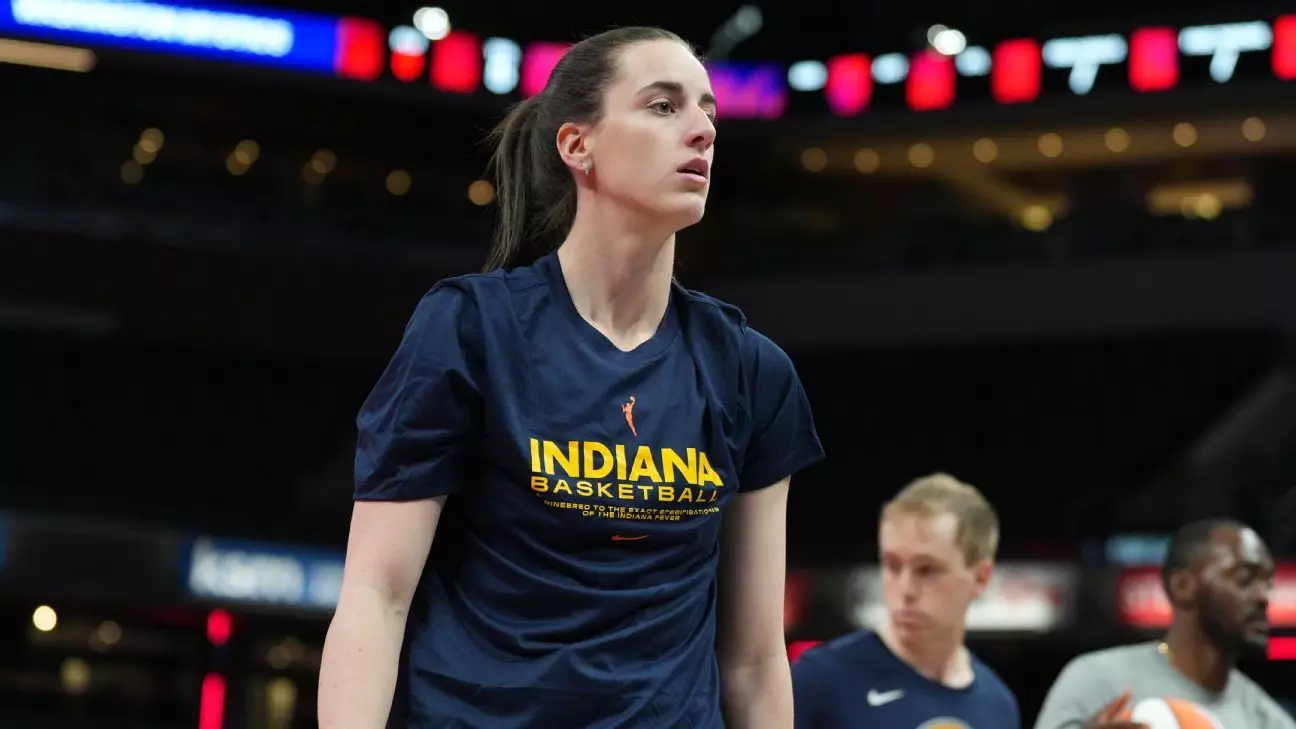Caitlin Clark, the Indiana Fever’s luminous talent and the 2024 No. 1 draft pick, finds herself in an unexpected predicament as she grapples with a left quad strain that has benched her for recent matches. It is a stark reality for an athlete so accustomed to the adrenaline and highs of competition. Her situation epitomizes a broader discourse within sports—an industry relentless in its demand for performance, often at the expense of patience and healing. Clark’s conscious decision to refrain from rushing back into play resonates with athletes and fans alike, reinforcing the idea that health should take precedence over a hurried return.
In her own words, Clark delineates a measured approach to her recovery, emphasizing the importance of day-by-day evaluations. “I feel like I’ve made a lot of progress,” she stated, showcasing a reflective understanding of her situation. However, the weight she carries as a star performer adds pressure that can’t be easily shed. A full recovery is pivotal not only for her career but also for a Fever team that has been treading water at 3-5 during her absence. The upcoming games against powerhouses like the Atlanta Dream and the New York Liberty loom on the horizon, amplifying the tension between ambition and the need for caution.
The Emotional Toll of Injury
For Clark, the emotional ramifications of being sidelined are profound. This injury marks the first time in her professional and collegiate history that she has missed games, a testament to her previously unwavering physical resilience. She recalls how, during a pronounced moment of intensity against the Liberty, adrenaline masked her pain until it became incontrovertible. It underscores a critical narrative in sports: the fine line between pain and injury, where athletes often push their bodies beyond reasonable limits, only realizing the consequences when it’s too late.
Clark’s candid admission about grappling with frustration reveals the emotional labyrinth athletes often navigate during injuries. The inability to participate not only affects them physically but creates a cognitive dissonance where an athlete’s identity can feel fragmented. “Just having good perspective is the best way to approach it,” she said, which epitomizes a mature outlook. Yet, this perspective should not distract from the reality that the culture around sports often romanticizes endurance and stoicism at the expense of mental health.
Learner from the Sidelines: A Paradigm Shift
Taking a step back can often provide unexpected insights and revelations, and Clark seems to be reveling in this unorthodox opportunity. Watching from the sidelines offers her a unique learning experience that many athletes overlook in their rush to return to gameplay. “It’s taught me a lot,” she expressed, acknowledging the unexpected pedagogical value of her enforced absence. By absorbing strategies from the bench, she may return not just restored but enriched with newfound knowledge—this could very well transform her approach to the game.
Moreover, Clark has assumed the role of a “connector” between players and coaches, illustrating that leadership does not solely manifest in gameplay. It’s about fostering connections, and supporting her teammates in a moment of challenge. That instinct speaks volumes about her character; that she seeks purpose beyond personal glory during adversity is a sentiment that could strengthen her team in unforeseen ways.
Clarity can often emerge from chaos, and this injury might be serving as an unexpected metamorphosis for Clark—one that bolsters not only her physical capability but nurtures her emotional and strategic acuity.
The Team’s Resilience: A Community in Crisis
The Fever’s performance has been a fluctuating saga during Clark’s hiatus, with the team experiencing both the weight of her absence and the emergent resilience among teammates. “It’s hard when your point guard goes out that controls a lot of the game,” Clark noted, highlighting the void left by her injury. Sports are intrinsically communal; the successes and failures reverberate through the assembled talents, creating a complex tapestry interwoven with both triumphs and tribulations.
As the Fever squeezed out a hard-fought victory against the Washington Mystics amidst this turbulence, it illuminated how embracing resilience can mobilize a team. Even without their star, players adapted and recalibrated, showcasing their potential to evolve and persist. The rhythm of their game shifted, broadening their tactical playstyle and instilling a sense of grace under pressure.
Yet, Clark’s analytical eye on defense raises pertinent questions about the holistic approach of the Fever. While offensive strategies may have evolved, the critical assessment of their defensive gameplay reflects an area demanding attention, underscoring that every setback, whether injury-related or tactical, should serve as an opportunity for growth.
In the larger narrative of sports, it’s often not just about individual stars but rather the collective spirit that embodies the essence of a team—through injury, adversity, and all the moments in between.

